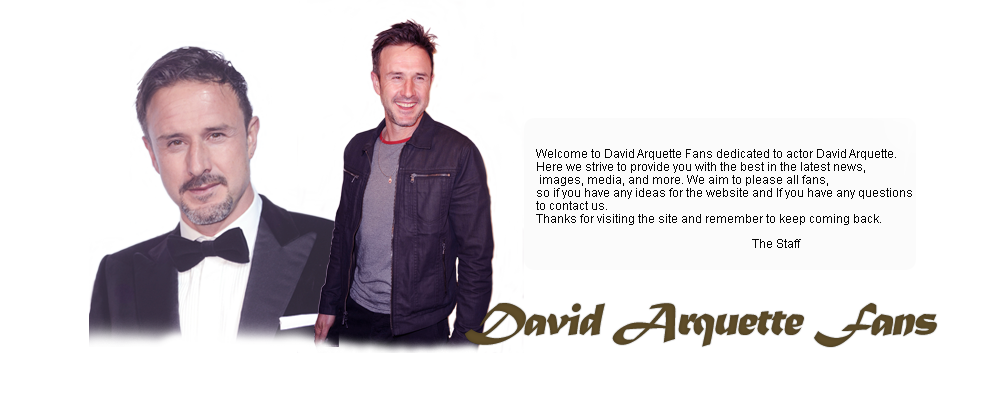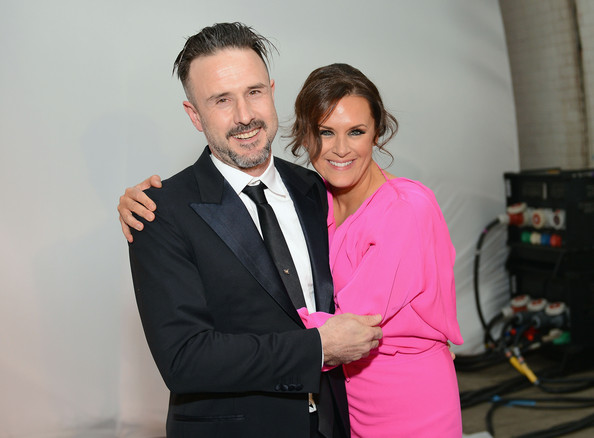When asked to describe her idea of what heaven might look like, award-winning costume designer Colleen Atwood, fresh off an Oscar nomination for her work on Snow White and the Huntsman, summed it up with a rhyme: "Where the sea meets the sky in the mist of the eye." That vision came to life on Saturday, January 13 at the Art of Elysium's Sixth Annual Gala. Atwood, as the 2013 Visionary, was honored alongside actor David Arquette, the recipient of the "Spirit of Elysium" Award. The celebrity-based nonprofit, founded by Jennifer Howell, brings together famous artists, actors, and musicians, who voluntarily donate their time and talents to children battling serious medical conditions.
While the skies didn't part, divine intervention came from the production team, who finagled closing down an important traffic tunnel for the occasion. From the giant custom-crafted eye which beamed down at the star-studded guests to a midnight performance by John Legend, the experience was quite celestial—at least according to Atwood, Arquette and Howell, with whom Interview debriefed post-event.
JENNIFER HOWELL: Hello, everybody! David, I love you, thank you very much for those beautiful flowers.
DAVID ARQUETTE: Oh, you're sweet, thank you.
INTERVIEW: Colleen, you were chosen to design the Art of Elysium gala this year, featuring your interpretation of the concept of heaven. Where did your vision come from?
COLLEEN ATWOOD: Well, it's based on the theme of the charity—what heaven is to different people. I kept thinking about all these long drives I have all the time and how happy I am, always, when I hit the ocean and I can see the water and the sea together. The idea for the venue moved around a little bit, because originally we were thinking, "Oh, wow, it could be on the ocean, it could be really cool"—then we realized it's January and it's night, and you can't see anything anyway. Then I came up with the tunnel idea, so Rick Heinrichs, who's an incredible production designer friend of mine, I said, "Rick can you figure this out?" We knew what we wanted it to look like, but he really helped figure it out for me, and he did a tremendous job.
ARQUETTE: So powerful—the eye looking down with the light shining through it was so beautiful.
HOWELL: You killed it, Colleen.
ATWOOD: David, I loved when [your daughter] Coco tidied up your hair at the end. [laughs]
INTERVIEW: David, how do you think of heaven?
ARQUETTE: My vision for heaven would involve laughter and love. I think those are my two favorite emotions or expressions, and when people have joy in their heart and in their soul, it just makes for such a fun experience. And I really enjoy life, and the lighter side of life, and having fun, and having friends around, and laughing, and music.
INTERVIEW: Jen, what about Colleen's work resonated with Art of Elysium, and what influenced your decision to choose her as this year's Visionary?
HOWELL: Every year, whenever we get into selecting a Visionary, we really try to look at someone's entire volume of work; and it's very much about having a consistent—you know if Colleen Atwood did a costume. Her work has a mark. We really try to select visionaries who we feel speak to a true vision, and honestly, there are very few people who have that, who have this mark that is truly, truly their own. I don't think there are many women I know who come close to Colleen and what she does and what she designs.
INTERVIEW: Colleen, when you look back on your career so far, are there any kind of throughlines—themes or ideas that you keep coming back to over and over again?
ATWOOD: As a designer, you definitely have your habits; you have your things that you like, but I do try to make it fun. [laughs] I've been extremely lucky to work with people like Tim Burton that are artists who do want to have fun within the parameter of business that we have to be in. The spirit that you put into your work, no matter what it is, comes out in your work, and I've always believed that. When people touch something and feel good when they're doing it, you get a good thing out of it. I know it sounds corny, but I really believe that.
INTERVIEW: David, what about you, when you think about what you've done up to this point—do any narratives jump out at you?
ARQUETTE: I typically try to do projects where I like the character or I like the story. I try to find a human balance between them. I try to bring humor to whatever I do, even if it's a dramatic character. We're all human beings, so we have a range of emotions, and to be able to tap into the human quirky qualities of a character is really fun for me. To find those happy accidents, those moments that are out of our human control that something bigger happening has an effect on. It's a look or a reaction or some sort of exchange between two people. Those are the moments that resonate the strongest with me.
INTERVIEW: Can you tell us the story of how you got involved with Art of Elysium, and what it's been like for you so far?
ARQUETTE: Well, I first got involved because my sister Patricia was helping them throw an art show, and the artist was doing these paintings using famous mug shots. It was very visual and spoke to me, and I loved the fact that it put a human face, a kind of rebellious face, to celebrity, and that was really interesting to me. I collect a lot of different things, and one of the things I had collected was the West Hollywood Police Department booking chair. I liked it because it was from the '60s and it was all attached—it had the numbers attached to the chair. It was the actual chair that whoever got arrested whoever got arrested in West Hollywood got their picture taken in, and a lot of famous people had that happen to them, unfortunately. So I bought it and I offered it up to take pictures and people could get their mug shot and make a donation to the charity. That was my first involvement with them, it was about 10 years ago.
INTERVIEW: Have there been any other memorable moments in the last decade?
ARQUETTE: Whenever I work with the kids, it's always such an amazing moment. I just came back from a session, and one of the kids was new to having to undergo treatment for her condition, and she was having a really rough time. It's hard to see kids going through a difficult, painful time. She was really sad, and it was painful for her. But then—after they did their procedure, what they needed to do—she had time to paint, and she came over and painted this beautiful heart and a peace sign and her name. She really got into the art and took her mind off it, and moments like that are just beautiful and put your own life and what's important into perspective. It's about helping these kids and these parents. It's incredibly difficult for them to have to go through this process. Me being a father, I can only imagine, so to be able to give them some relief, too, is really a gift.
ATWOOD: I think the families need support as much as the children themselves. It's touching to me—I was a mother when I was really young—how young these parents are. They're in their early 20s and they're coping with this massive, daunting—I don't know how they do it—they have two children, one of them is sick, and they're 22 years old and they don't have insurance. It's absolutely inspiring; it's so incredible how brave they are.
Source
Source





























0 comentarios:
Post a Comment